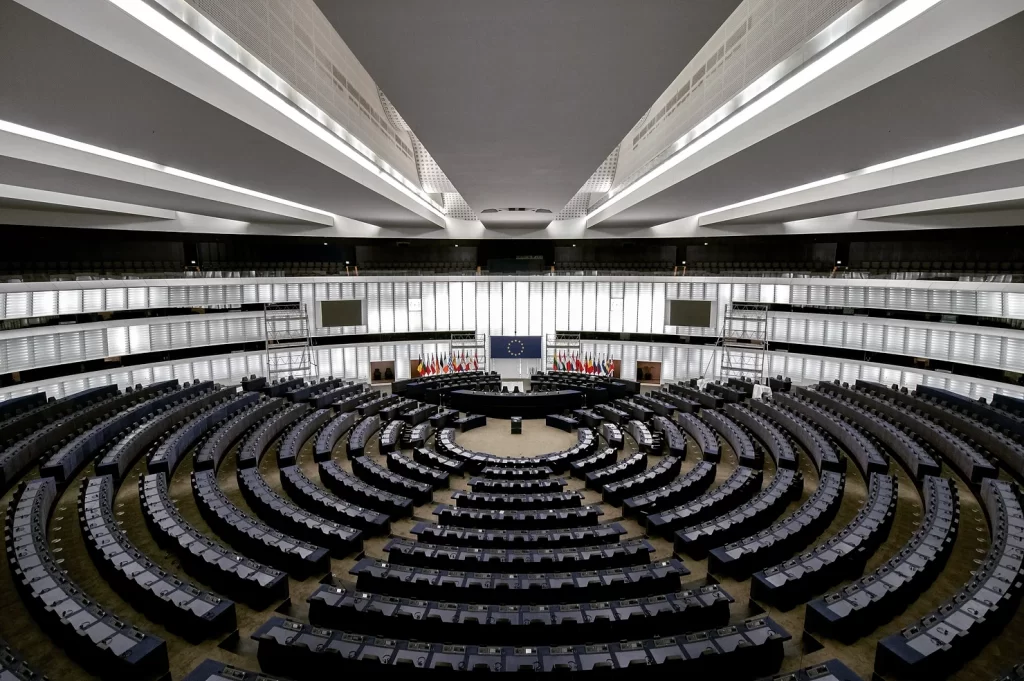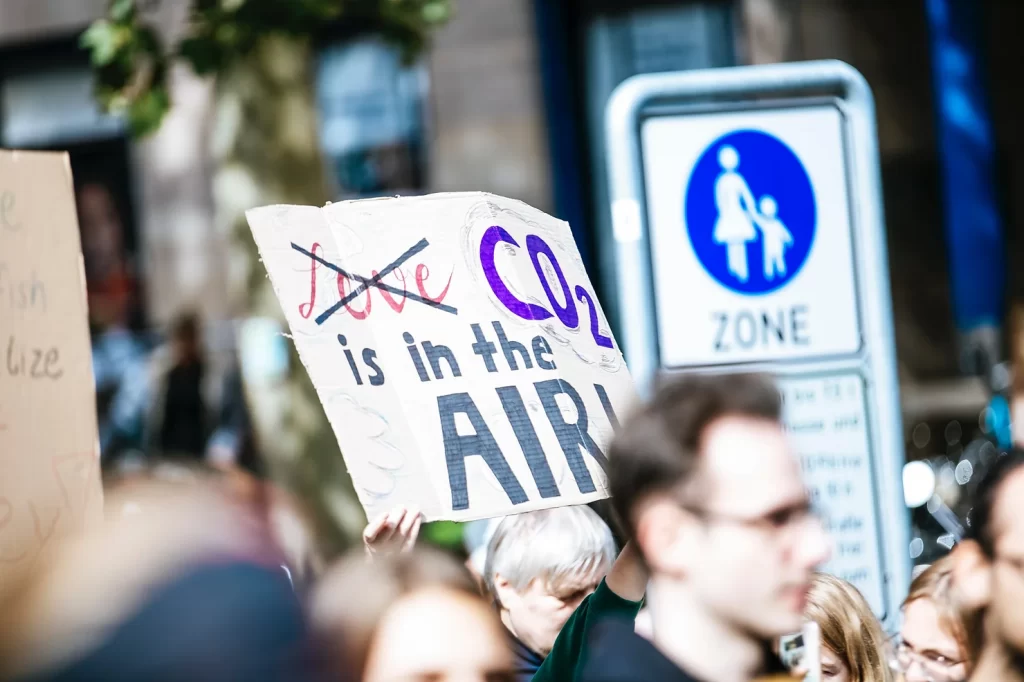Introduction to Carbon Credits
Climate change stands as one of the most pressing challenges of our time, with rising global temperatures threatening biodiversity, increasing the frequency of extreme weather events, and posing significant risks to human health and livelihoods. In this complex battle against environmental degradation, the concept of carbon credits has emerged as a novel approach to mitigating the effects of greenhouse gas emissions.
Essentially, carbon credits offer a way for individuals and organizations to “offset” their carbon footprint by investing in environmental projects aimed at reducing future emissions. This system not only incentivizes the reduction of carbon dioxide and other greenhouse gases but also fosters a global movement towards sustainability and environmental responsibility. Through this article, we’ll delve into the intricacies of carbon credits, exploring their origins, how they function, their impact on the environment, and the challenges and criticisms they face. By understanding the role of carbon credits, we can better appreciate their potential in steering us towards a more sustainable future.
Understanding Carbon Credits
At its core, a carbon credit represents a permit or certificate that allows the holder to emit a certain amount of carbon dioxide or other greenhouse gases. One credit typically equates to one ton of carbon dioxide emitted into the atmosphere. These credits are part of broader carbon markets, where they can be traded, bought, or sold, providing economic incentives for reducing emissions. Carbon markets are divided into two main types: compliance and voluntary.
- Compliance markets are regulated by mandatory carbon reduction regimes, such as the Kyoto Protocol’s Clean Development Mechanism (CDM). Here, countries and large emitters are allocated carbon credits based on international agreements and must either reduce their emissions or purchase additional credits to meet their targets.
- Voluntary markets, on the other hand, cater to entities and individuals not bound by regulatory mandates but who wish to offset their emissions for ethical, corporate social responsibility, or branding reasons. In this market, credits are often generated by projects that reduce emissions, such as renewable energy installations or reforestation efforts, which can then be sold to those looking to offset their carbon footprint.
The allure of carbon credits lies in their flexibility and the global perspective they bring to carbon reduction. By tying the reduction of emissions to market mechanisms, carbon credits create a financial incentive for decreasing greenhouse gases. This system allows for a diverse array of projects, from forest conservation in Brazil to wind farms in India, providing a tangible way for emissions in one part of the globe to be counterbalanced by positive environmental actions elsewhere.
History and Evolution of Carbon Credits
The concept of carbon credits is rooted in the increasing awareness of the need for global environmental governance, particularly in addressing climate change. The genesis of the modern carbon credit market can be traced back to the Earth Summit in Rio de Janeiro in 1992, which led to the establishment of the United Nations Framework Convention on Climate Change (UNFCCC). However, it was the Kyoto Protocol, adopted in 1997, that introduced the mechanisms that underpin today’s carbon credit system.
The Kyoto Protocol set binding emission reduction targets for developed countries, recognizing their historical contribution to current levels of greenhouse gases in the atmosphere. It introduced three market-based mechanisms to aid in meeting these targets: International Emissions Trading (IET), Clean Development Mechanism (CDM), and Joint Implementation (JI). These mechanisms were designed to provide cost-effective solutions for reducing global emissions, encouraging countries and companies to invest in emission-reducing projects around the world.
Over the years, the carbon credit system has evolved significantly. The Paris Agreement, adopted in 2015, marked a pivotal shift by engaging not just developed but also developing countries in the effort to limit global warming. While the compliance markets established by international agreements have played a crucial role, the voluntary carbon markets have also seen substantial growth, driven by increasing corporate and individual commitment to sustainability.
This evolution reflects a growing recognition of the interconnectedness of global environmental challenges and the need for collaborative, market-based solutions to combat climate change. As the system continues to evolve, it carries the potential to drive significant reductions in global greenhouse gas emissions, fostering a sustainable future for all.

How Carbon Credits Benefit the Environment
The primary allure of carbon credits lies in their potential to transform environmental protection into a tangible and scalable market-driven endeavor. By assigning a monetary value to the act of reducing or avoiding carbon emissions, carbon credits create a powerful incentive for businesses, governments, and even individuals to innovate and invest in green technologies and sustainable practices. Here’s how they contribute to environmental sustainability:
- Promoting Renewable Energy: Carbon credits often finance projects that generate clean, renewable energy, such as wind, solar, and hydroelectric power. These projects not only reduce the reliance on fossil fuels but also contribute to the diversification of the energy mix, enhancing energy security and reducing environmental pollution.
- Forest Conservation and Reforestation: Many carbon credit projects focus on forest conservation, reforestation, and afforestation. Trees absorb carbon dioxide as they grow, making these projects a natural way to sequester carbon from the atmosphere. Furthermore, they help preserve biodiversity, protect watersheds, and maintain ecosystem services.
- Encouraging Energy Efficiency: Investments in energy efficiency are another significant area for carbon credit projects. By improving the energy efficiency of buildings, manufacturing processes, and transportation, these projects reduce overall emissions and often lead to cost savings over time.
- Innovation in Agriculture: Sustainable agricultural practices are increasingly becoming part of carbon credit projects. Techniques such as improved crop rotation, reduced tillage, and better manure management can significantly reduce methane and nitrous oxide emissions, potent greenhouse gases.
- Waste Management Improvements: Carbon credits also fund projects that capture and utilize methane from landfills and agricultural waste, turning a potent greenhouse gas into a source of clean energy.
By facilitating these kinds of projects, carbon credits not only contribute directly to the reduction of greenhouse gases but also spur broader environmental benefits, including cleaner air and water, enhanced biodiversity, and stronger, more resilient ecosystems. This multifaceted approach to environmental protection underscores the potential of carbon credits to be a key part of the solution in the fight against climate change.
Criticisms and Challenges
While carbon credits are lauded for their innovative approach to reducing global emissions, the system is not without its criticisms and challenges. These concerns are crucial for understanding the complexities of carbon markets and for improving their effectiveness and integrity.
- Additionality and Measurement: A fundamental principle of carbon credits is that the emission reductions they represent should be additional—meaning they would not have occurred without the incentive provided by the carbon credit. However, proving additionality can be complex and contentious, with skeptics questioning whether certain projects truly result in net emission reductions. Accurately measuring the amount of carbon saved or sequestered by a project also poses significant challenges, leading to potential overestimation or underestimation of credits.
- Permanence and Leakage: Permanence refers to the enduring nature of the emission reductions achieved by carbon credit projects. For example, carbon sequestered by a reforestation project could be released back into the atmosphere if the forest were later destroyed by fire or logging. Leakage occurs when a project’s emission reductions lead to increased emissions elsewhere, as in the case where protecting one forest simply shifts deforestation to another area.
- Market Fluctuations and Price Volatility: The price of carbon credits can be highly volatile, influenced by regulatory changes, market demand, and broader economic conditions. This volatility can impact the financial viability of projects and the overall stability of carbon markets.
- Equity and Distributional Effects: There are concerns about the equity of carbon markets, particularly the impact on indigenous and local communities living in or near project areas. In some cases, projects may lead to the displacement of communities, restriction of access to resources, or other social and economic repercussions.
- Reliance on Offsets: Some critics argue that the availability of carbon credits may encourage businesses and governments to rely on offsets rather than directly reducing their own emissions. This reliance could potentially slow the transition to low-carbon technologies and practices.
The Future of Carbon Credits
The future of carbon credits is poised at a crucial juncture, influenced by evolving regulatory landscapes, technological advancements, and shifting societal norms towards sustainability. As the world grapples with the urgent need to combat climate change, carbon credits are likely to play an increasingly significant role, albeit with necessary reforms and innovations.
- Technological Advancements: Emerging technologies such as blockchain and satellite monitoring are set to enhance transparency and accountability in carbon markets. These technologies can help verify the authenticity of carbon credits, ensure the permanence of emission reductions, and provide real-time monitoring of project impacts.
- Integration with National and International Policies: As countries strive to meet their commitments under the Paris Agreement, carbon credits can be integrated into national climate strategies. This integration can provide flexible mechanisms for countries to achieve their Nationally Determined Contributions (NDCs) while fostering global cooperation.
- Expansion of Voluntary Markets: The voluntary carbon market is expected to grow substantially, driven by corporate commitments to net-zero emissions and consumer demand for sustainable products. This growth necessitates the development of rigorous standards and third-party verification to maintain market integrity.
- Innovation in Project Development: The future will likely see a diversification of projects eligible for carbon credits, including blue carbon projects that protect and restore marine and coastal ecosystems, urban green infrastructure initiatives, and technologies that capture and store carbon directly from the air.
- Focus on Social and Environmental Co-Benefits: There is a growing emphasis on ensuring that carbon credit projects deliver not only emission reductions but also tangible social and environmental benefits, such as biodiversity conservation, water quality improvement, and community development.

Conclusion
Carbon credits represent a unique and powerful mechanism in the fight against climate change, offering a way to mobilize private capital for public good. By translating emissions reductions into a tradable commodity, they provide an economic incentive for companies, governments, and individuals to invest in projects that benefit the environment. However, for carbon credits to fulfill their potential, it is imperative that the challenges they face, including concerns about additionality, permanence, and equity, are addressed through rigorous standards, transparent verification processes, and continuous innovation.
As we move forward, the evolution of carbon credit markets will likely be characterized by increased scrutiny, higher standards, and technological innovation, ensuring that they remain a valuable tool in the global effort to create a more sustainable and resilient future. The journey of carbon credits reflects the broader challenge of climate action—complex, sometimes contentious, but undeniably critical in our collective pursuit of environmental sustainability.
About GreenUP
Pioneering the Green Transition with Expertise and Innovation. With over 10 million I-RECs issued since 2019, we are Vietnam’s leaders in renewable energy certification. Our comprehensive suite of services, positions us uniquely as a one-stop solution for all your green and ESG needs. Experience unparalleled market access, competitive pricing, and strategic partnerships that drive not only cost savings but also significant value to your sustainability goals.
References
- St Paul’s Chambers. (n.d.). Carbon Credit Fraud. Available at: https://www.stpaulschambers.com/carbon-credit-fraud/.
- Draycott Browne Solicitors. (n.d.). Carbon Credit Fraud. Available at: https://www.draycottbrowne.co.uk/fraud/carbon-credit-fraud.
- Insolvency Service. (2021). Collaborative enforcement: jail for carbon credit fraudsters. [Blog] GOV.UK. Available at: https://insolvencyservice.blog.gov.uk/2021/11/17/collaborative-enforcement-jail-for-carbon-credit-fraudsters/.
- Vox. (n.d.). Carbon Offsets, Credits Financialization, Ecologi Solutions Scam. Available at: https://www.vox.com/23817575/carbon-offsets-credits-financialization-ecologi-solutions-scam.
- Financial Conduct Authority. (n.d.). Carbon Credit Trading Scams. Available at: https://www.fca.org.uk/consumers/carbon-credit-trading-scams .
- Portfolio Institutional. (n.d.). Carbon Markets: A Big Problem. Available at: https://www.portfolio-institutional.co.uk/esg-hub/carbon-markets-a-big-problem/.
- Forbes. (2023). Carbon Credits: Addressing Skepticism and Charting the Future at COP28. Available at: https://www.forbes.com/sites/globalcitizen/2023/11/16/carbon-credits-addressing-skepticism-and-charting-the-future-at-cop28/.
- Yale Environment 360. (n.d.). Is the Legacy Carbon Credit Market a Climate Plus or Just Hype? Available at: https://e360.yale.edu/features/is-the-legacy-carbon-credit-market-a-climate-plus-or-just-hype.
- Harvard Business Review. (2023). What Every Leader Needs to Know About Carbon Credits. Available at: https://hbr.org/2023/12/what-every-leader-needs-to-know-about-carbon-credits.
- Times of India. (n.d.). The Carbon Credits Market: The Past, Present, and Future. Available at: https://timesofindia.indiatimes.com/blogs/voices/the-carbon-credits-market-the-past-present-and-future/.
- Wikipedia. (n.d.). Carbon Offsets and Credits. Available at: https://en.wikipedia.org/wiki/Carbon_offsets_and_credits.
- Yahoo. (n.d.). Consent. Available at: https://consent.yahoo.com/v2/collectConsent.
- Carbon Brief. (2023). Carbon Offsets 2023 Timeline. Available at: https://interactive.carbonbrief.org/carbon-offsets-2023/timeline/.
- Commonland. (n.d.). Questions About the Carbon Market. Available at: https://4returns.commonland.com/stories/questions-about-the-carbon-market/.
- Agriculture and Horticulture Development Board. (n.d.). Price Disparities Between Carbon Markets. Available at: https://ahdb.org.uk/news/price-disparities-between-carbon-markets.
- Gold Standard. (n.d.). Carbon Pricing: What Carbon Credit Worth. Available at: https://www.goldstandard.org/blog-item/carbon-pricing-what-carbon-credit-worth.
- South Pole. (n.d.). Carbon Credits Frequently Asked Questions. Available at: https://www.southpole.com/sustainability-solutions/carbon-credits-frequently-asked-questions.
- McKinsey & Company. (n.d.). A Blueprint for Scaling Voluntary Carbon Markets to Meet the Climate Challenge. Available at: https://www.mckinsey.com/capabilities/sustainability/our-insights/a-blueprint-for-scaling-voluntary-carbon-markets-to-meet-the-climate-challenge.
- ClimateTrade. (n.d.). Everything You Need to Know About Carbon Credits. Available at: https://climatetrade.com/everything-you-need-to-know-about-carbon-credits/.
- Chooose. (n.d.). Compliance Carbon Markets vs Voluntary Carbon Markets. Available at: https://www.chooose.today/insights/compliance-carbon-markets-vs-voluntary-carbon-markets.
- CoreMarkets. (n.d.). Understanding Compliance and Voluntary Carbon Markets: A Guide for Sustainability Leaders. Available at: https://coremarkets.co/insights/understanding-compliance-and-voluntary-carbon-markets-a-guide-for-sustainability-leaders.
- Offset Guide. (n.d.). Understanding Carbon Offsets: Carbon Offset Programs, Mandatory & Voluntary Offset Markets. Available at: https://www.offsetguide.org/understanding-carbon-offsets/carbon-offset-programs/mandatory-voluntary-offset-markets/.
- E.ON. (n.d.). Compliance vs Voluntary Carbon Markets Explained. Available at: https://www.eon.com/en/innovation/future-of-energy/energy-and-beyond/compliance-vs-voluntary-carbon-markets-explained.html.
- Global Market Insights. (n.d.). Carbon Credit Market. Available at: https://www.gminsights.com/industry-analysis/carbon-credit-market.
- Markets and Markets. (n.d.). Carbon Offset/Credit Market. Available at: https://www.marketsandmarkets.com/Market-Reports/carbon-offset-credit-market-85350774.html.
- Investopedia. (n.d.). Carbon Trade. Available at: https://www.investopedia.com/terms/c/carbontrade.asp.
- LinkedIn. (n.d.). Carbon Market: Opportunities & Challenges. Available at: https://www.linkedin.com/pulse/carbon-market-opportunities-challenges.
- Forest Carbon. (n.d.). Carbon Credits and Offsetting. Available at: https://www.forestcarbon.co.uk/knowledge-base/carbon-credits-and-offsetting.
- Sustainable Carbon. (n.d.). Como São Gerados. Available at: https://www.sustainablecarbon.com/en/como-sao-gerados/.







